Many people wish to add a personal touch to their Thanksgiving and Christmas celebrations. Did you know that there are 935 royalty-free vector graphics related to calligraphy thankful grateful blessed? This article will guide you through creating heartfelt calligraphy art using simple words like “Thankful,” “Grateful,” and “Blessed.” Get ready for inspiration!
Exploring the Phrases: Thankful, Grateful, Blessed
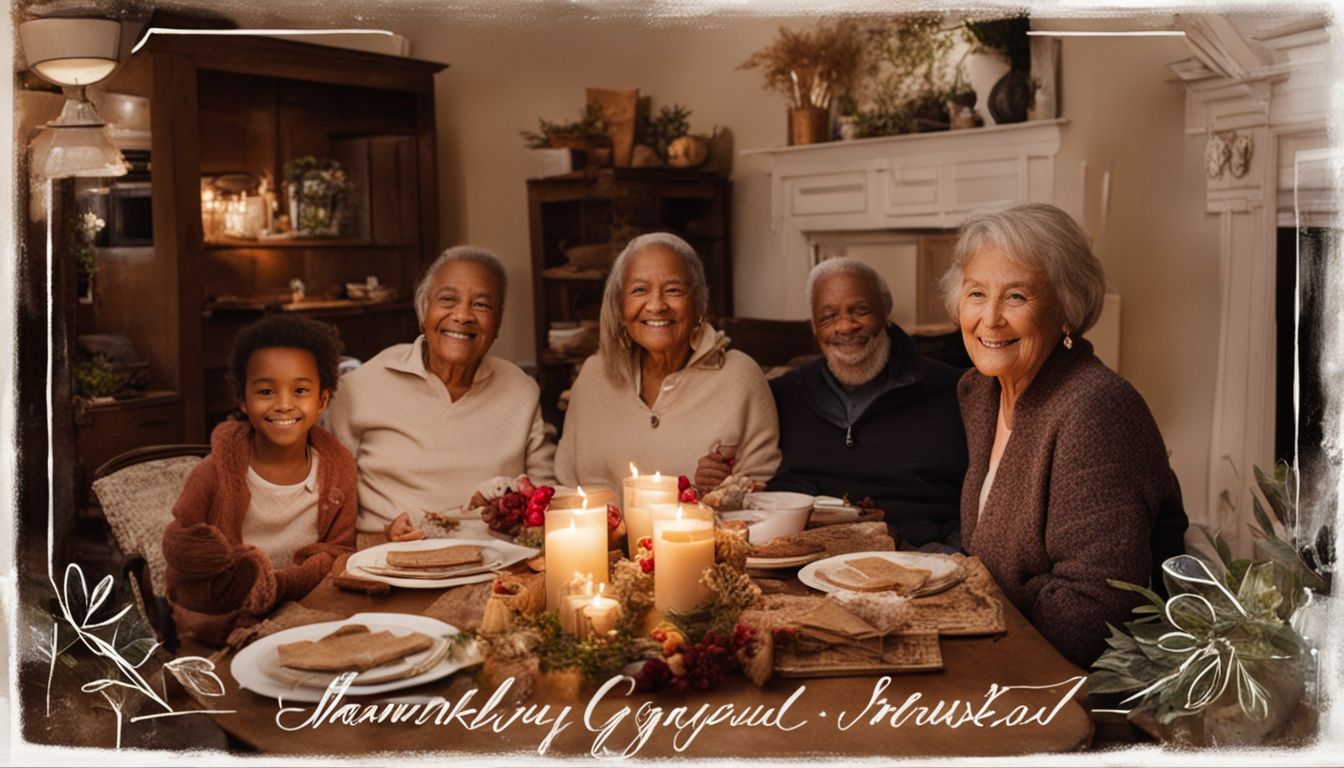
Discovering the Meaning Behind “Thankful, Grateful, Blessed”
Unveiling the Emotional and Cultural Significance of Calligraphic Expressions
Significance in Calligraphy
The artistry of calligraphy transforms simple words such as thankful, grateful, and blessed into emotive artwork that truly touches the soul. Such handwritten wonders become particularly significant on Thanksgiving Day, elevating them beyond mere decorative appeal.
Each stroke and curve in grateful calligraphy conveys emotion, narrating a tale of thankfulness and redemption. Rendering these words necessitates refined hand motions and a comprehension of design guidelines particular to this artistic expression.
Artists frequently disseminate their calligraphic masterpieces on T-shirts, prayer cards, or as clipart for autumn festivities. This element of personalization amplifies the emotional significance of the items, rendering each piece a significant emblem of appreciation and love.
My initial foray into producing Thanksgiving-themed calligraphy enlightened me regarding the significance of each minute detail – how the selection of appropriate ink or paper could alter the overall effect.
This procedure enhances the aesthetic allure, while also fortifying the bond between the artist and the viewer.
Cultural and Emotional Impact
Moving from the significance of calligraphy, we see its deep cultural and emotional impact. Calligraphy does more than create beautiful art; it connects us to themes of Thanksgiving and gratitude.
Artists often use phrases like “Thankful,” “Grateful,” and “Blessed” to capture feelings that words alone can’t fully express. These hand-drawn pieces often feature decorations with acorns and oak leaves, symbols that further tie these artworks to blessings associated with fall.
Calligraphic art touches hearts in ways other forms can’t. It’s a way people celebrate moments of joy, such as Christmas Day or personal milestones. Wearing these sentiments on t-shirts or displaying them in homes reminds us daily of our many blessings.
This tradition of blending visual beauty with heartfelt messages has always been a powerful way to communicate emotions across cultures and generations, making every stroke convey much more than just letters on paper.
Design Principles in Calligraphy
When creating calligraphy, selecting the appropriate script is crucial. Symbols and motifs can add depth and meaning to the artwork. Consideration of color theory also plays a significant role in the design process.
Choosing the Right Script
Selecting the optimal script for your calligraphy endeavor is pivotal in expressing feelings and relaying your message. Since you’re creating art with phrases such as “Thankful, Grateful, Blessed,” modern calligraphy provides versatility and style that enhances your work.
This approach, celebrated for its spontaneous lines and variable stroke thickness, combines well with handwritten brush lettering, generating pieces characterized by character and warmth.
Integrating contemporary scripts into articles such as t-shirts or home decor provides an original touch that distinguishes. The decision between utilizing a brush pen or a pointed pen depends on the textural richness and depth you wish to accomplish in your work.
Think about trialing various instruments to identify which most accurately depicts the sentiment you’re targeting in your masterpiece.
Incorporation of Symbols and Motifs
When crafting calligraphy, incorporating symbols and motifs significantly enhances the depth and meaning of the artwork. Choosing appropriate symbols can enrich the cultural significance and emotional resonance of the piece.
Whether it involves integrating seasonal symbols like pumpkins or incorporating floral motifs, these motifs designed for autumn themes heighten the overall design. For example, utilizing hand-drawn elements like praying hands or currency symbols can portray appreciation and abundance in a contemporary context, connecting with modern audiences.
Moreover, mastering the effective infusion of these symbols into calligraphic art is crucial for eliciting specific emotions in viewers. By skillfully blending phrases such as “Thankful,” “Grateful,” and “Blessed” with relevant symbols like clothing or purchase icons, artists reveal the intricacies of creating visually compelling pieces that deeply resonate with their audience while also staying current amidst ever-changing design trends.
Color Theory in Calligraphy
Color theory is pivotal in calligraphy, shaping the visual impact of artwork. The hex color codes enable the formation of diverse color filters and manipulation across various templates and designs.
Grasping this concept is crucial for calligraphers as it guides them in selecting colors that evoke specific emotions and ensure harmony within the artwork. By incorporating different shades and tones, calligraphic pieces can elicit unique cultural and emotional responses, enriching the overall artistic experience.
The implementation of color theory in calligraphy extends to enriching contrast and readability. When choosing colors for calligraphic elements such as text or symbols, designers consider how these hues interact with each other to ensure optimal legibility and visual appeal.
Furthermore, exploring the interplay between colors opens up avenues for innovative expression within the domain of calligraphic artistry by allowing artists to create customized palettes tailored towards specific themes or aesthetics.
Techniques for Creating Stunning Calligraphy
Discover the art of creating stunning calligraphy through brush pen techniques and pointed pen calligraphy. Learn about digital methods that can elevate your handwritten artwork to new heights.
Brush Pen Techniques
Brush pen calligraphy is a versatile and trendy technique that allows artists to create stunning handwritten art. It offers ease of use, making it a perfect choice for beginners and professionals alike.
Utilizing various pressure techniques, artists can achieve beautiful thick and thin lines, adding depth and dimension to their lettering. Moreover, blending multiple colors with brush pens offers endless creative possibilities in calligraphic art.
Incorporating the right brush pen techniques into your artwork can elevate the overall aesthetic appeal of your designs. This skill can be honed through online resources or local workshops, enabling individuals to master this timeless craft.
Pointed Pen Calligraphy
Pointed pen calligraphy is crucial in creating beautiful calligraphic art focused on themes of thankfulness, gratitude, and feeling blessed. This particular technique allows artists to craft elaborate designs that evoke strong emotional responses while communicating messages of appreciation and positivity.
Importantly, several renowned artists such as Galyna Tymonko and MD Al Amin have contributed their expertise to produce vector art that resonates with the essence of gratefulness and blessings, particularly emphasizing these sentiments during Thanksgiving and autumn seasons.
Through pointed pen calligraphy, a variety of seasonal themes are expressed through diverse artistic representations, serving as a visual reminder of the importance of acknowledging life’s blessings.
The content promotes a positive message through assorted calligraphic designs coupled with thematic imagery. These compelling pieces capture the spirit of gratitude by infusing it into varied forms such as home decor items like framed art, wall decals, or textile prints along with digital spaces including social media platforms.
By engaging in this expressive medium firsthand, whether working on drafting layouts or providing instructional resources for beginners who wish to explore their creative journey – individuals can genuinely immerse themselves in the world of pointed pen calligraphy to reveal its secrets and enrich their understanding beyond words.
Digital Calligraphy Methods
When it comes to creating stunning calligraphy, digital methods offer a world of possibilities. With the availability of various digital tools and software on platforms like Vecteezy, calligraphers can explore an ever-evolving range of design options.
These tools are crafted to enrich the art form, enhancing accessibility and providing customized solutions for artists seeking more than just traditional pen-and-ink techniques. For those who may find traditional calligraphy challenging or time-consuming, digital calligraphy methods reveal the secrets to creating beautiful lettering with ease.
In addition to the traditional brush pen and pointed pen techniques, credit card holders can now begin their calligraphic journey using specialized software and apps to create unique designs.
The intricate challenges involved in choosing between different scripts and ink effects are carefully navigated through these digital tools, offering a first-hand glimpse into the evolving world of calligraphic artistry.
Materials Used in Calligraphy
Selecting the right paper, ink, and brushes are crucial for creating stunning calligraphy artwork. To explore these materials further, read on!
Best Papers for Calligraphy
When selecting the best papers for calligraphy, it’s essential to consider aspects such as texture, absorbency, and durability. The appropriate paper can significantly affect the quality of your calligraphic work. Here are some top options to consider:
- Bristol Paper: A smooth surface makes it ideal for various calligraphy styles. Its durability prevents ink from seeping through the paper.
- Watercolor Paper: Offers excellent absorbency and texture, providing a unique appearance and feel to calligraphic pieces.
- Parchment Paper: Known for its vintage appeal and smooth surface, it adds a distinctive touch to traditional calligraphy.
- Cotton Rag Paper: This high-quality paper is both durable and has excellent ink retention properties, making it suitable for intricate calligraphy work.
- Japanese Calligraphy Paper (Washi): Renowned for its strength and versatility, Washi paper is perfect for traditional Japanese calligraphy styles.
- Marker Paper: Specifically designed for marker pens and brush pens, this type of paper ensures smooth strokes and minimal ink spreading.
- Vellum Paper: With its transparent quality, vellum can be used to layer calligraphic designs or add a subtle visual interest to artwork.
- Handmade Paper: Offers a unique texture and appearance due to its individual production process, adding an elegant touch to calligraphic creations.
Keep in mind that experimenting with different papers can lead to exciting discoveries in your calligraphy practice.
Types of Inks and Their Effects
Choosing the right ink is crucial for achieving the desired effect in calligraphy. Different types of inks can produce varied outcomes, with factors such as flow, consistency, and finish influencing the final result. The following are a few common types of inks used in calligraphy along with their effects:
- India Ink: This type of ink is known for its rich black color and quick-drying properties. It creates strong, bold lines ideal for traditional calligraphy styles.
- Sumi Ink: Derived from traditional Japanese methods, sumi ink offers deep, matte blacks and subtle variations in tone when diluted, adding depth and character to calligraphic artwork.
- Metallic Inks: These specialty inks come in a range of colors such as gold, silver, and bronze. They lend an elegant shimmer to calligraphy pieces, making them suitable for special occasions or decorative elements.
- Acrylic Inks: With vibrant hues and a fast-drying formula, acrylic inks allow calligraphers to experiment with bold colors and modern styles while ensuring durability on various surfaces.
- Watercolor Inks: Offering translucent washes of color, watercolor inks can be layered to create captivating gradient effects and delicate lettering suitable for artistic and expressive calligraphy.
- Fountain Pen Inks: Available in a wide spectrum of colors and properties like shading or sheening, fountain pen inks offer versatility for casual or formal script writing with different nibs.
- Calligraphy Inks: Specifically formulated for dip pens and brushes, these inks provide optimal flow and control while producing crisp lines or lush swells that enhance the artistry of calligraphy.
- Walnut Ink: Made from walnut shells or husk extracts, this natural ink yields sepia-toned results perfect for vintage-inspired scripts and illustrations.
Choosing Between Synthetic and Natural Brushes
When choosing between synthetic and natural brushes for calligraphy, it’s essential to consider the following factors:
- Bristle Type: Synthetic brushes typically use nylon or polyester bristles, providing durability and springiness. In contrast, natural brushes utilize animal hair like sable, squirrel, or goat for smoothness and flexibility.
- Cost and Availability: Synthetic brushes are generally more affordable and widely available. Natural brushes, however, can be more expensive and may vary in availability based on animal conservation and ethical considerations.
- Maintenance: Natural brushes require careful care to maintain their shape and quality, often necessitating specific cleaning methods and conditioning. Synthetic brushes are easier to clean and less prone to damage.
- Performance: Natural brushes excel in holding a large amount of ink or paint due to their absorbency, providing smooth and consistent strokes. On the other hand, synthetic brushes offer precision and control due to their ability to maintain a sharp edge.
- Environmental Impact: While synthetic brush production is being directed toward sustainability by using recycled materials, natural brushes raise concerns regarding animal welfare and environmental ethics.
- Personal Preference: The choice between synthetic or natural brushes ultimately depends on the artist’s individual needs, artistic style, ethical considerations, and desired performance characteristics.
Step-by-Step Guide to “Thankful, Grateful, Blessed” Artwork
Create the layout.
Sketch and ink the design.
Drafting the Layout
When creating a calligraphy artwork, it is important to carefully plan the layout. The first step involves selecting from a range of 935 royalty-free vector graphics and clipart related to the theme of gratitude and positivity.
This includes filters for image search such as type, license, and color options that help in finding suitable visuals for drafting the layout. It’s important to consider diverse artistic styles and examples that are suitable for stickers, greeting cards, or t-shirt prints while incorporating seasonal themes like Thanksgiving.
In addition to using visual content related to gratitude and positivity themes, it’s important to keep in mind the availability of various tools for layout drafting purposes. By using digital software designed for creating custom designs, one can ensure a personalized approach when crafting unique calligraphy artworks infused with thankfulness and appreciation.
Sketching and Inking
Transitioning from the layout to the next stage, artists can gain insights into sketching and inking techniques for creating calligraphy designs related to gratitude. Understanding that tutorials and step-by-step guides are available for producing “Thankful, Grateful, Blessed” artwork is essential.
The article offers resources for finding hand-drawn calligraphy designs and inking tools used by various artists who showcase their process of creating gratitude-themed artwork. Furthermore, the importance of sketching and inking in calligraphy designs for t-shirts and greeting cards is emphasized, providing inspiration.
Final Touches and Embellishments
While creating “Thankful, Grateful, Blessed” artwork through calligraphy, the final touches and embellishments play a crucial role in enhancing its aesthetic appeal. These finishing details may include delicate floral motifs, intricate borders, or subtle shading to add depth and dimension to the artwork.
Artists often use metallic inks or embossing techniques to create a tactile and visually captivating effect on paper. Moreover, incorporating seasonal elements such as pumpkins or autumn leaves brings a thematic cohesion that resonates with viewers.
Many professional artists also employ digital tools to add final touches and embellishments digitally. This includes using software for digital templates, allowing them to effortlessly experiment with different color schemes and pattern designs before applying them to their physical calligraphy pieces.
Furthermore, various vector designs created by artists provide unique final touches associated with handwritten calligraphy art. For instance, these vector designs can be used for T-shirt prints or integrated into home decor items like framed art or wall decals.
Incorporating Calligraphy into Home Decor
Transform your living space with the elegance of calligraphy. Elevate your home decor with framed art, wall decals, and textile prints adorned with stunning handwritten designs.
Framed Art
When incorporating calligraphy into home decor, framed art adds an elegant and sophisticated touch. A beautifully crafted piece featuring phrases like “Thankful,” “Grateful,” or “Blessed” can serve as a focal point in any room.
The intricate details and carefully chosen color schemes bring warmth and personality to the space. Guests will be impressed by the personalized design, creating an inviting atmosphere that reflects the homeowner’s style.
The fusion of calligraphic art with framed pieces not only enhances the aesthetics of a room but also evokes feelings of gratitude and positivity. For instance, an autumn-themed artwork with calligraphic lettering is like adding a personalized touch to your seasonal decor, making it truly unique.
So whether you’re looking for a thoughtful gift or something more than just wall decorations, framed calligraphic art serves as an elegant expression of thankfulness and appreciation.
Wall Decals
When it comes to incorporating calligraphy into home decor, wall decals provide a stylish and impactful option. The article showcases various stunning designs suitable for creating unique wall decals.
Artists like Galyna Tymonko and Nirmala D’Souza have contributed vector images, providing a variety of options for creating custom wall decals. These designs not only enhance the visual appeal of living spaces but also evoke sentiments of gratitude and thankfulness, making them ideal for themed decor during Thanksgiving celebrations.
The theme of togetherness and appreciation reflects in these captivating designs, offering inspiration for enhancing interiors with heartfelt expressions. One free design specifically mentioned as suitable for creating wall decals is “Positive word design for print” by Nirmala D’Souza.
Whether it’s showcasing gratitude or adding an element of elegance to walls, these calligraphic art pieces are crafted to make a statement in any living space.
Textile Prints
Textile prints offer a wonderful opportunity to integrate calligraphy into home décor and fashion. Whether on t-shirts or throw pillows, calligraphic artwork can impart a distinctive touch to any textile piece.
Whether it’s a cozy pumpkin-themed t-shirt or a stylish quote element for Thanksgiving, these designs create visually appealing and significant apparel. The fusion of exquisite calligraphy and high-quality materials elevates the allure of textile prints, rendering them an outstanding option for anyone aiming to convey appreciation and festivity through their clothing selections.
By blending striking calligraphic designs with textiles, individuals can infuse personal expression and style into their daily lives. When it comes to crafting personalized textiles, from t-shirts to tailored home decor items such as wall hangings and tablecloths, integrating calligraphy adds an artistic dimension that distinguishes them from mass-produced alternatives.
Calligraphy in Digital Spaces
Discover the world of digital calligraphy with a variety of tools and software available to bring your creative expressions to life. Explore techniques for creating stunning digital templates, sharing your art on social media platforms, and engaging in the constantly evolving realm of calligraphic art.
If you are looking for more than just traditional mediums, immerse yourself in this dynamic aspect of calligraphy by reading more about it.
Digital Tools and Software for Calligraphy
Digital tools and software have transformed the realm of calligraphy, offering artists a variety of options for crafting beautiful artwork. Design software such as Adobe Illustrator and Procreate provide customizable brushes and digital pens that replicate traditional calligraphy tools.
These platforms allow artists to experiment with different fonts, colors, and textures seamlessly. Additionally, access to online databases like Adobe Stock offers an extensive collection of images and videos for inspiration or incorporation into calligraphic designs.
Moreover, these digital tools empower artists to share their work on various social media platforms, reaching a broader audience and connecting with other enthusiasts. Embracing these technological advancements not only enriches the creative process but also fosters collaboration within the calligraphy community.
As technology continues to advance, so do the possibilities for calligraphers seeking to explore new artistic horizons.
Moving onto “Creating Digital Templates”…
Creating Digital Templates
When crafting digital calligraphy artwork, one can create templates using software programs such as Adobe Photoshop or Illustrator. By utilizing these tools, artists have the ability to craft reusable templates for various projects.
These templates offer a foundation for designing custom calligraphy pieces with consistent layouts and styles. Moreover, calligraphers can integrate personalized details and embellishments into their digital templates to create unique and captivating artworks.
Digital templates provide flexibility in producing diverse calligraphic designs across multiple mediums, including print materials like t-shirts and home decor items. Designers can customize the color schemes, typography, and layout elements within these templates to cater to specific themes or trends in calligraphy artistry.
Sharing these digital templates also allows other enthusiasts to explore new avenues of creativity when crafting their own stunning calligraphy pieces.
Sharing Art on Social Media Platforms
Many creators enthusiastically showcase their calligraphic artworks on various social media platforms. Platforms like Instagram, Pinterest, and Facebook are popular choices for sharing images of stunning calligraphy pieces, where artists often engage with followers and fellow enthusiasts.
Art communities on these platforms create an environment for sharing techniques, gaining inspiration from others’ work, and even offering tutorials or workshops to a wider audience.
Notable artists such as Galyna Tymonko, Nirmala D’Souza, Harshavathi CP showcase their remarkable pieces online and inspire many budding calligraphers to express themselves through this intricate art form.
Moreover, the availability of digital tools enhances the sharing experience by enabling artists to produce high-quality content that resonates with diverse audiences.
Creatives can also sell their calligraphy artwork directly through social media or direct traffic to their websites for purchasing options. In addition, users can explore curated collections of calligraphy designs hosted on sites like Vecteezy for fresh and unique inspirations while browsing or searching using keywords such as “pampkin” or “t-shirt.” Hence, these platforms have significantly influenced the contemporary practices in the sharing art worldwide.
Calligraphy Workshops and Classes
Explore online resources and local workshops for learning calligraphy. Find tips designed for beginners and start your journey to mastering this timeless art form.
Online Resources for Learning
Looking to learn calligraphy? Here are some online resources that can help you get started and improve your skills:
- Skillshare offers over 200 calligraphy courses, taught by professionals, covering a variety of styles and techniques.
- The Calligraphy Institute provides video tutorials, printable worksheets, and access to a supportive community for learners at all levels.
- Udemy’s calligraphy courses include beginner-friendly options focusing on foundational skills and advanced courses exploring complex scripts.
- On Instagram, calligraphy artists like @CalligraphyMasters share tips, tutorials, and inspiration through engaging visual content.
- YouTube channels such as The Postman’s Knock offer free calligraphy tutorials suitable for beginners.
These resources provide ample learning opportunities for anyone interested in the art of calligraphy.
Finding Local Workshops
Local workshops provide an excellent opportunity to learn and refine calligraphy skills. Discover the best local workshops in your area by following these pointers:
- Research online for local calligraphy workshops, such as those hosted by Calligraphy Guilds or Art Centers.
- Join social networking groups and platforms like Instagram, Facebook, or Meetup to find information about nearby workshops.
- Check local event listings in community centers, libraries, and art supply stores for upcoming calligraphy classes.
- Reach out to local artists and calligraphers to inquire about any upcoming workshops or classes they may be hosting.
- Visit art fairs, craft markets, and exhibitions where calligraphers often participate; there you might find information about upcoming workshops.
Finding the right workshop is crucial for honing your calligraphy skills and connecting with fellow enthusiasts in the local art community.
Stay tuned for exciting trends in calligraphic art!
Tips for Beginners
New to the intriguing world of calligraphy? Here are some essential tips to help you get started and find your way in this beautiful art form:
- Start with foundational calligraphy principles, understanding the basic strokes and letterforms.
- Familiarize yourself with different calligraphy scripts such as Italic, Gothic, or Copperplate to expand your skillset.
- Explore various calligraphy materials like nibs, inks, and papers to understand their effects on your work.
- Practice regularly and consistently to improve your technique and develop a personal style.
- Seek inspiration from professional calligraphers’ works and participate in workshops or classes for guidance.
Remember, every stroke is an opportunity for creative expression and growth in your journey as a budding calligrapher!
Trends in Calligraphic Art
Contemporary calligraphic art is constantly evolving, embracing modern styles and techniques. It has gained popularity as a unique feature in modern weddings and events, often combined with other forms of artistic expression.
Sporting a blend of tradition and innovation, calligraphy continues to captivate artists and enthusiasts alike.
Contemporary Styles and Innovations
Modern calligraphy has undergone an evolution with contemporary styles and innovations. The incorporation of calligraphy into various facets of modern life, such as t-shirts, home decor, and digital spaces, has redefined its relevance.
From trendy t-shirt prints featuring phrases like “Gather Together” to stylish home decor pieces adorned with heartfelt messages, calligraphy has become a prominent feature in contemporary design.
Moreover, its fusion with digital tools and software has unveiled new possibilities for artists and designers.
The continuously developing nature of calligraphic art is evident not just through its fusion with other art forms but also in its growing popularity at modern weddings and events.
This trend indicates a shift towards personalized and tailored elements in special occasions by integrating handcrafted calligraphic details. In addition, the seamless integration of calligraphy into digital platforms showcases how this traditional art form continues to adapt to the demands of today’s digital age.
Popularity in Modern Weddings and Events
Calligraphy has gained immense popularity in modern weddings and events, with a notable 935 royalty-free vector graphics catering to the “Thankful, Grateful, Blessed” theme. This surge reflects a high demand for calligraphic art in event-related items such as T-shirts, cards, and mugs.
Seasonal themes like Thanksgiving and autumn are particularly emphasized in connection with calligraphic art, pointing to its relevance for events during these times. The versatile nature of various calligraphy designs makes them suitable for incorporating into merchandise and decor for weddings and other contemporary events.
The rise of calligraphy’s demand is evident in its fusion with other art forms relevant to modern gatherings, showcasing an ever-changing trend in event aesthetics. As this trend continues to gain momentum, it suggests a shift towards embracing unique personalized touches that resonate with the sentiment of gratitude at weddings and diverse celebratory occasions.
Fusion with Other Art Forms
Transitioning from the integration of calligraphy into modern weddings and events, we can observe its fusion with other art forms. This fusion extends to collaboration with various artists to create stunning designs that evoke gratitude and seasonal themes.
Seasonal motifs are highlighted for use in stickers, gift tags, and greeting cards, enhancing the calligraphic art experience. The article showcases 935 royalty-free vector graphics and clipart related to gratitude and seasonal themes, allowing for fusion with other art forms.
Specific designs by various artists exemplify the fusion of calligraphy with autumn themes.
The resources are categorized as “Pro” or “Free,” providing options for users to download or purchase calligraphy designs in order to create custom pieces of art. This interplay not only enriches the realm of artistic expression but also supports contemporary styles and innovations within this ever-evolving medium.
Gallery of Inspirational Designs
Explore a stunning showcase of professional calligraphers’ work and inspiring reader submissions. Click to view more breathtaking designs.
Showcase of Professional Calligraphers
The gallery showcases works by renowned calligraphers MD Al Amin, Irina Balashova, Slvector Grapy, and MST Ramisa Begum. They have created stunning pieces that exemplify the beauty and skill of calligraphy.
Furthermore, the featured vector images are by Nirmala D’Souza and Gfx Expert Team.
Transitioning to a comprehensive exploration of design principles in calligraphy.
Reader Submissions and Stories
Transitioning from the showcasing of professional calligraphers, we now turn to the engaging and personal contributions from our readers. Aligned with the themes of gratitude, thankfulness, and blessings, our readers have shared their own experiences and stories that add a heartfelt touch to the article.
These submissions reflect diverse perspectives on gratitude and thanksgiving, enriching the overall impact of this art form.
Through these contributions, a layer of authenticity is added to our content. They provide an emotional connection that resonates with a wide audience. The reader submissions not only make the content relatable but also offer a platform for others to engage with calligraphy art in a meaningful way.
Conclusion
When it comes to stunning calligraphy, the phrases “Thankful, Grateful, Blessed” hold significant cultural and emotional impact. Design principles in calligraphy involve selecting the right script, integrating symbols and motifs, and considering color theory.
Techniques like brush pen methods and digital calligraphy are utilized to create beautiful artwork. Commonly used materials include high-quality papers, various types of inks with different effects, and a choice between synthetic and natural brushes.
The step-by-step guide for creating “Thankful, Grateful, Blessed” artwork involves drafting the layout, sketching and inking, followed by adding final touches and embellishments. Calligraphy is not limited to paper, but can also be integrated into home decor with framed art pieces or wall decals.
It has also found its place in digital spaces through tools such as digital software for creating templates or sharing on social media platforms.
For those interested in learning more about calligraphy techniques, there are online resources available, including workshops that cater to beginners. Lastly, trends have been seen shifting towards fusion with other art forms leading to contemporary styles and innovations, which has increased its popularity at modern weddings and events.
For more inspiration on creating elegant letter forms, explore our collection at fancy calligraphy alphabet.
FAQs
1. What is “Stunning Calligraphy: Thankful, Grateful, Blessed Handwritten Art”?
“Stunning Calligraphy: Thankful, Grateful, Blessed Handwritten Art” is a unique style of art that features beautiful calligraphy with the words “Thankful”, “Grateful”, and “Blessed”.
2. Can I get this calligraphy design on t-shirts?
Yes! You can find t-shirts featuring the stunning handwritten art of “Thankful,” “Grateful,” and “Blessed”.
3. How do I purchase these t-shirts?
You add your favorite designs to your cart and proceed to checkout when you’re ready.
4. Are there different sizes available for these t-shirts?
Absolutely! The Stunning Calligraphy designed t shirts come in various sizes suitable for everyone.
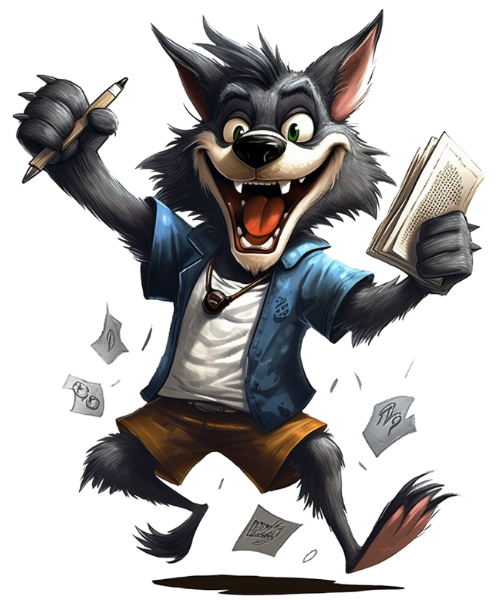
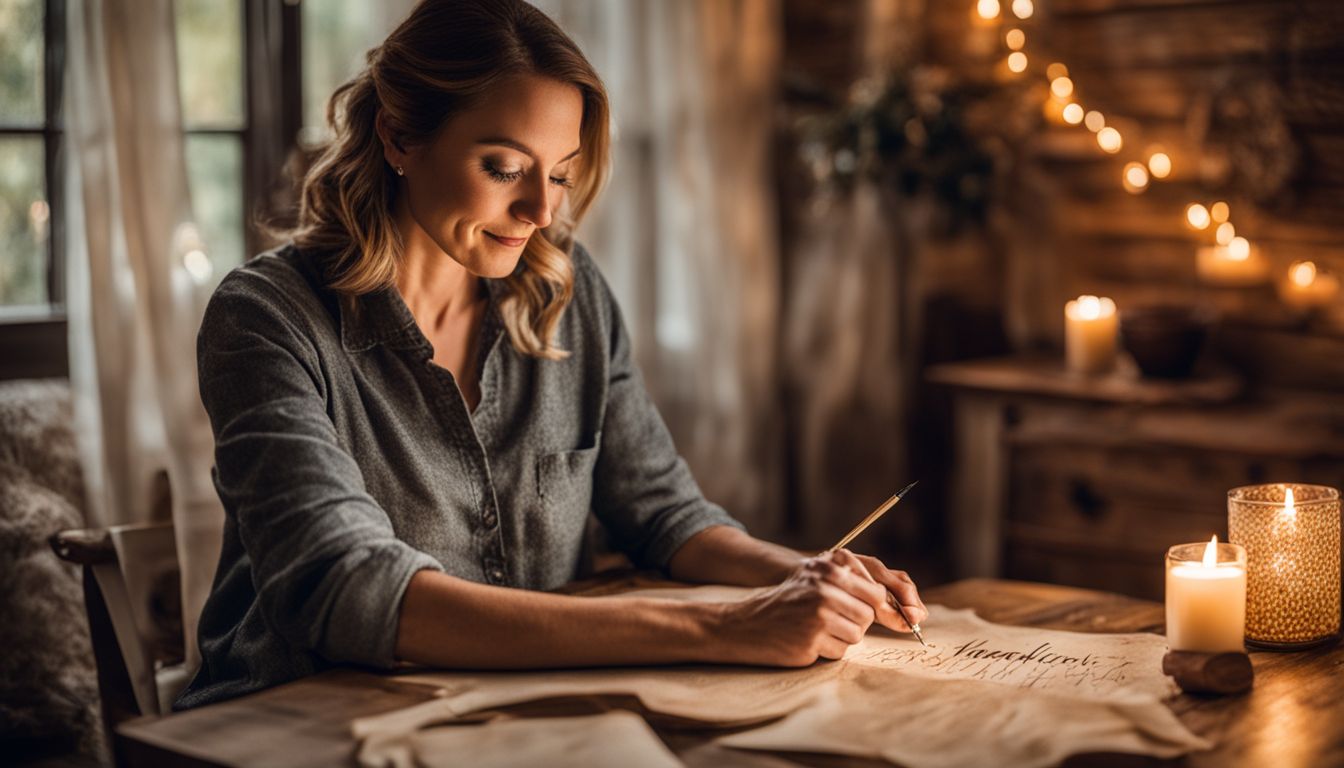
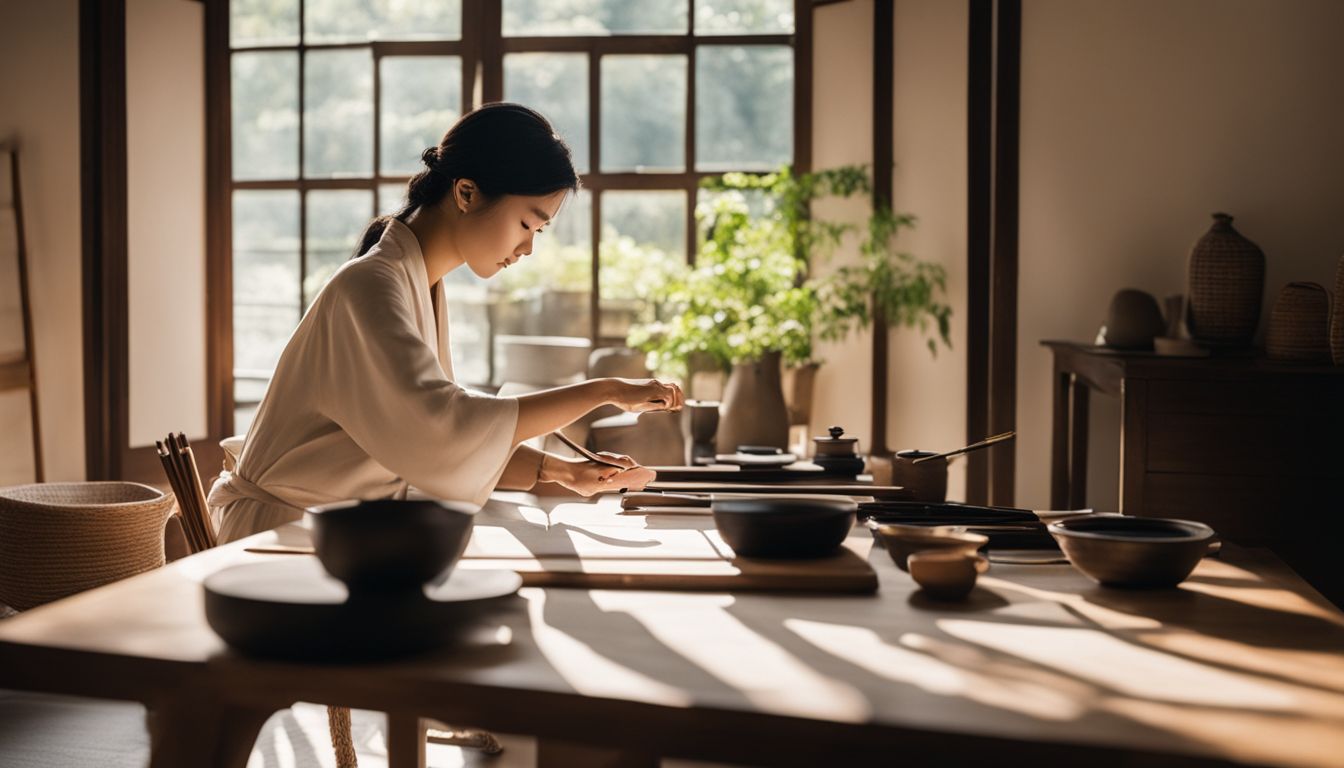
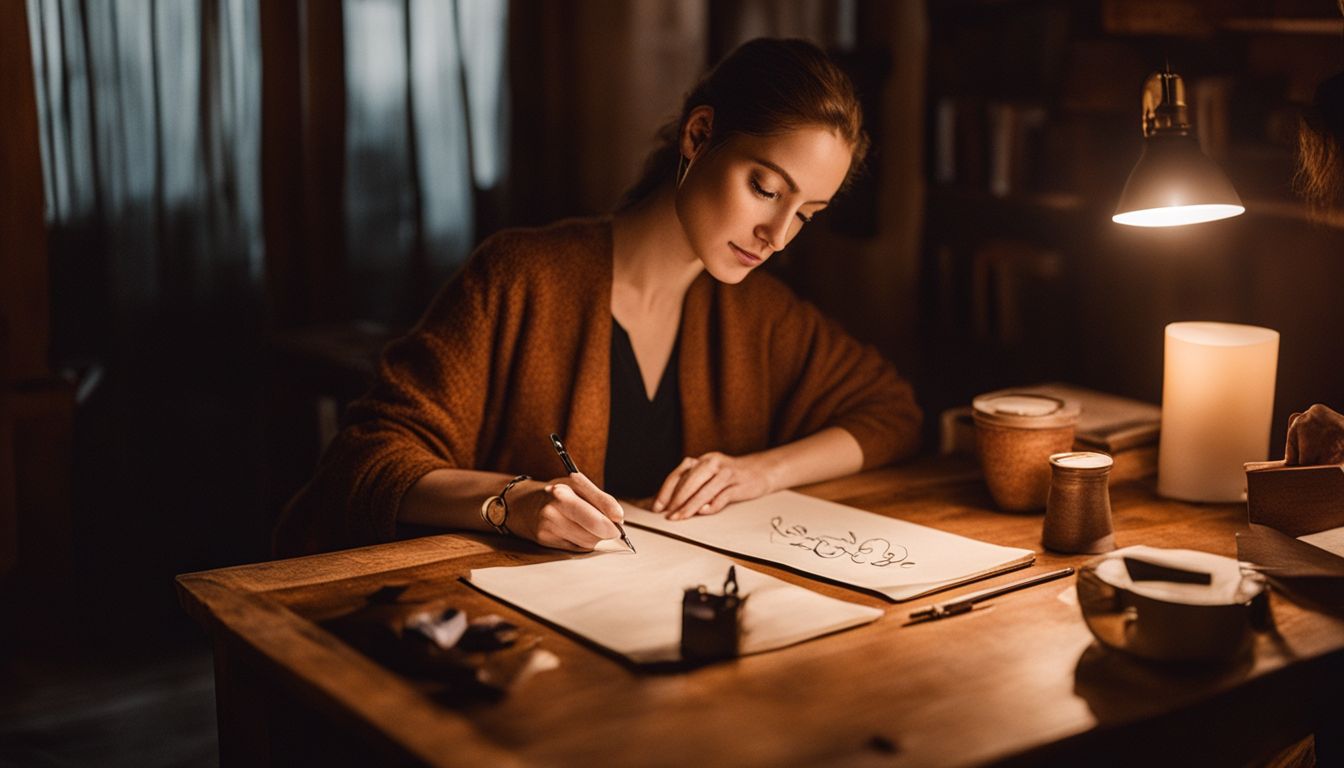
Leave a Reply
You must be logged in to post a comment.